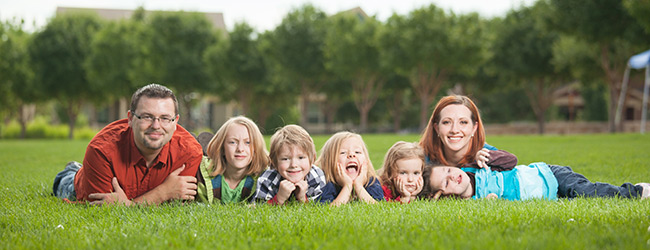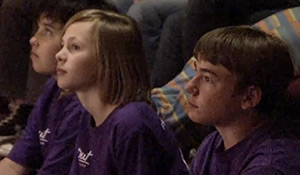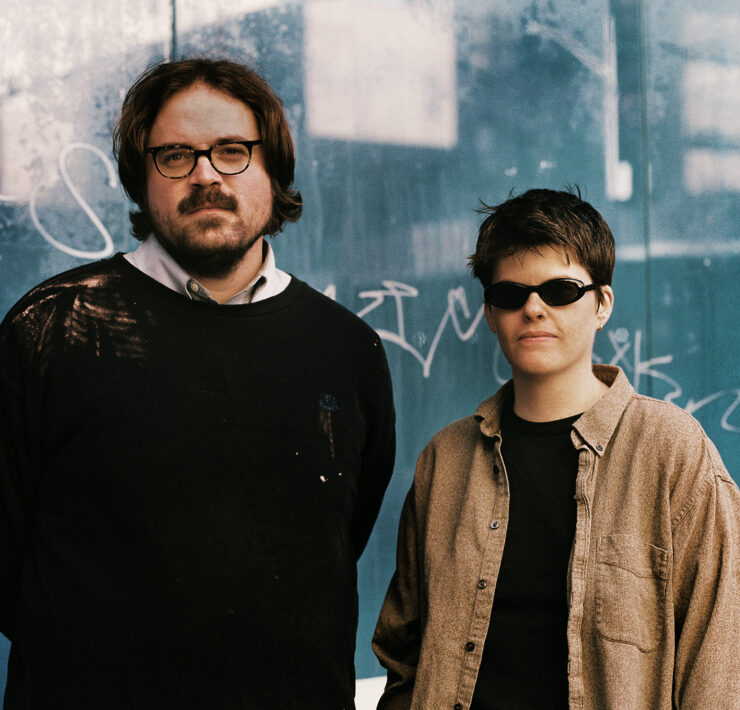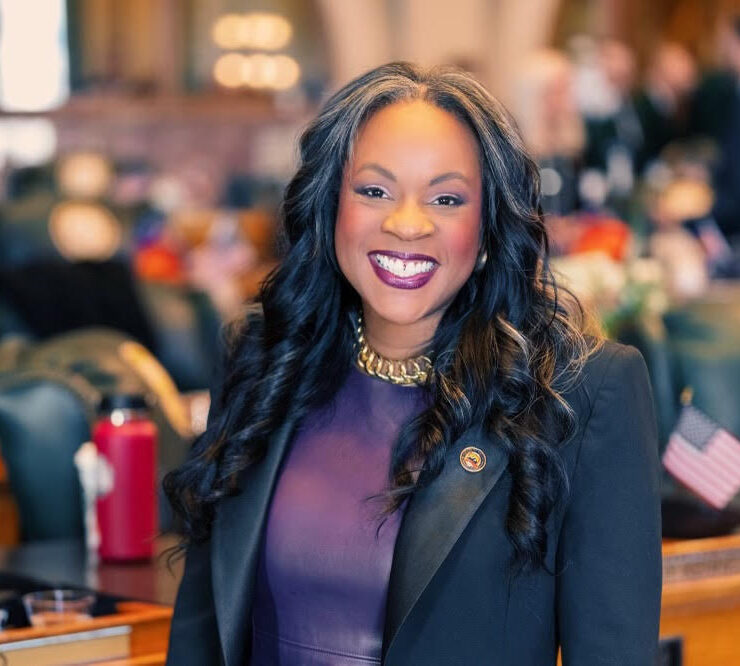It’s getting better: a progress report on Colorado school climate for LGBT youth


Loving, outgoing and just completely joyful. This is how Kathryn Mathis describes her 6-year-old daughter, Coy.
But the portrait of this happy and carefree child is not without its challenges. Coy Mathis has struggled as a male-to-female transgender child with discrimination at the hands of her previous elementary school. The case fixed a national media spotlight on Coy, and landed her front-and-center in a pioneering state ruling regarding the treatment and safety of transgender and gender-nonconforming youth in schools.
“Coy started school as a ‘male,’” Kathryn said. “We had been trying to keep her transition mostly at home at that point. After a few months, we found that it just really wasn’t working out. It was just causing her a lot of anxiety and stress not having the people in her school know who she really was.”
Kathryn and her husband, Jeremy, knew allowing Coy to present publicly as a girl was vital to keeping their child’s happy and vibrant spirit thriving. They scheduled a meeting with Eagleside Elementary School in Fountain to discuss their daughter’s transition. Kathryn said the meeting went “wonderfully.” School officials affirmed Coy’s identity and offered appropriate accommodations — this included permission for Coy to use the girls’ bathroom.
But the positive response was short lived when last December the school called the Mathis family to inform them Coy could no longer use the girls’ bathroom. The family met with the school (which was unwilling to change their position), pulled Coy out to be home schooled and filed a discrimination complaint against the school. Nearly six months later, the Colorado Civil Rights Division ruled in favor of the Mathis family, stating that it is discrimination to deny a child access to the restroom representing their expressed gender.
After celebrating the ruling, the future is once again looking bright for Coy and her family. Having relocated to Aurora (for reasons unrelated to the school troubles), Coy will return to public school again this fall and is “super excited,” Kathryn said.
Kathryn is excited herself. She said the new school has shown the family tremendous compassion and understanding.
“They said, ‘Of course we’re going to follow the law, and not just because it’s the law, but because it’s the right thing to do.’”
Kathryn also said her family wants to continue fighting for the rights and dignity of transgender kids.
“We’re happy to talk about Coy’s specific experience, because we didn’t really have a whole lot of people to turn to when we started fighting,” she said. “But at the same time, we do have five kids and we are very busy, so I don’t know if it’s going to be very proactive activism.”

School climate across Colorado

In a video titled “100% Myself,” a group of students donning purple shirts with “out” on the front and “proud to be an ally” on the back laugh, dance and cheer in the hallways of their school.
The students are celebrating Manhattan Middle School’s annual Diversity Day, an event sponsored by the school’s Gay–Straight Alliance. Officially called “Allies in Diversity,” the GSA club boasts more than 100 members from the Boulder school that enrolled 466 students in the 2011–2012 year.
While the number of student participants is an impressive aspect of the club, the mere existence of a GSA in a middle school is worthy of note. An increase in GSAs in middle and high schools around the state indicates a promising change for Colorado students.
According to the Gay–Straight Alliance Network — a national organization that works to connect and strengthen school GSAs through national conferences, leadership development and community level resources — the number of GSAs in Colorado has increased by more than 60 percent since 2011. Though much of this growth is occurring in urban high schools, GSAs are emerging in even conservative rural parts of Colorado, and more recently the GSA Network and One Colorado, the state’s largest LGBT advocacy organization, report an increase in middle school clubs and resources for LGBT youth.

“Colorado has taken a huge step forward,” said Carolyn Laub, executive director for the GSA Network.
Laub believes so strongly in the progress Colorado has made, and it’s continued potential, that the GSA Network made Denver the host to the organization’s annual conference earlier this summer.
“It was exciting to hear Colorado say, ‘Only two years ago, we did not have that many GSAs, nor did we have the budget to create them.’ Now, every state in the country has at least one club, with Colorado’s network being one of the largest,” she said.
A major catalyst for this rapid and positive two-year change for Colorado LGBT youth was a 2011 piece of legislation, HB-1254, that according to One Colorado, “clearly defined bullying to protect those students most targeted, including LGBT young people.” The bill was passed by the bipartisan Colorado General Assembly and signed into law by Gov. John Hickenlooper, a Democrat, as a response to the tragic national wave of LGBT youth suicides in the Fall of 2010, and required districts to adopt appropriate policies and protocol in protecting LGBT youth from bullying.
“Colorado schools have been really responsive,” said Daniel Ramos, director of organizing and alliance building for One Colorado. “[The schools] see how bullying plays out, and they want to intervene.”

Ramos is also the founder of the Safe Schools program. Through One Colorado, Safe Schools works to advance LGBT-friendly policy and educate and empower LGBT youth and their allies.
Of the state’s 147 school districts, 55 have included sexual orientation in their anti-bullying policies and another 35 include sexual orientation in harassment policies. But a 2012 policy scan found only 37 percent of Colorado schools are in full compliance with the anti-bullying legislation, Ramos said.
Ramos remains optimistic, noting One Colorado is certain those numbers have gone up since the 2012 survey. The organization plans to release a second policy scan in January 2014.
Still, until all Colorado school districts are proactive in protecting their LGBT students and the bullying of these youth becomes a rare or obsolete occurrence, there is still work to be done — as highlighted by the recent Coy Mathis case.
Earlier this year, the Mathis family made headlines when their 6-year-old transgender daughter, Coy, was barred from using the girls’ restroom at her Fountain elementary school. Though the family would ultimately prove victorious — the Colorado Division of Civil Rights ruled that not respecting the gender identity of a transgender student is discrimination — the attitudes exhibited to the Mathis family by Fountain–Fort Carson School District 8 cry out for change.
That change must include increased conversation and education about transgender children, said Karen Adams, founder of Trans-Youth Education and Support Colorado, a Boulder PFLAG satellite group. TYES-CO provides education, support and other resources to families of transgender children and adolescents across the sate.
“In Colorado, we have extremes,” Adams said. “Boulder Valley School District has worked hard to educate kids about what it means to be transgender. Then we have had other districts that are ill-prepared and not educated; kids in these schools have to explain who they are and why they are transitioning. That sets students up for brutal bullying. Their peers do not know any better than to bully.
“Leaders of the school districts can talk to organizations, they can bring in panels from groups like TYES. They need to hear our stories and build that knowledge.”
Another group frequently left out of the anti-bullying discussion are the LGBT youth of color. Examining the intersectionality of race, ethnicity, sexual orientation and gender identity has recently become a priority issue for youth activists.
“When we turn to the youth and let them propel us forward, let them decide where we need to go next, immigration and the lived experiences of queer youth of color are what these movements of young people say we need to focus on,” Laub said. “What is the lived experience of a young, low-income, person of color who is LGBTQ? What happens when their schools are closed or privatized? Will their identities be respected?”
Laub said LGBT youth of color and education inequality became the backdrop of the 2013 GSA Network national conference. Unequal access to education and achievement impacts LGBT kids across the board leaving LGBT-identified youth less likely to achieve the same academic success as their heterosexual peers.
The 2011 Gay, Lesbian and Straight Education Network School Climate survey of more than 6,000 students nationwide — in which 82 percent of LGBT students reported having been verbally harassed over their sexual orientation — the LGBT students who faced more intense bullying had on average 0.4 points lower grade point averages than counterparts experiencing less and were half as likely to set their sights on higher education.
The gap could be explained in part with findings from an earlier National Education Association summit on LGBT youth in schools in 2008, which revealed that half of LGB students facing verbal harassment missed school at least once a month because of it, as did two-thirds of students who face physical harassment for sexual orientation or gender identity.
“All staff and faculty, including cafeteria staff to custodial employees, need to be educated and trained,” Ramos said, calling that training one of the greatest tools in countering the LGBT student achievement gap. “We know that if at least three staff members are supportive and available for students, success and safety will greatly increase.”
The second tool, Ramos said, is a reiteration of the importance of GSAs. Data shows these student organizations have not only provided positive outlets for students, but have also been a driving force in changing how school districts relate to its LGBT students — even (and especially) in conservative parts of the state.
Heather Scott, a teacher at Air Academy, a Colorado Springs’ Academy School District 20 high school, began sponsoring a Gay–Straight Alliance in her school eight years ago. Scott knows the impact created by the club is invaluable.
“[A] student said he knew of students who were thinking about dropping out of school and had nowhere to turn and no one to talk to,” Scott said. “I told him that I would sponsor the club and give those students a safe place to go. It was a great decision because I believe it has served that purpose over the past eight years.”
Part of that purpose is simply visibility.
GSAs communicate to higher administration within the school and the district that LGBT students are present and have a right to have their needs addressed. This powerful message leads to change in school districts such as Academy District 20.
District 20, along with Colorado Springs School District 11, are located in a notoriously-conservative part of the state, but the presence of out and vocal students is likely a reason the districts are among the 37 percent deemed to be in full compliance with Colorado’s 2011s anti-bullying legislation. And while that bill has been helpful and greatly effective in standing up for the dignity, safety and well-being of LGBT students, leaders from advocacy groups like One Colorado and the GSA Network know that most of the credit belongs to the brave students who choose to join GSAs and use their voices to speak up for themselves and their marginalized peers. It is those students, just like the proud kids in Allies for Diversity, who have, and continue to, truly make it better for Colorado’s LGBT kids and teens.
“Much of the work that has been done, and much of the success we’ve had, is because youth are telling their stories,” Ramos said.










